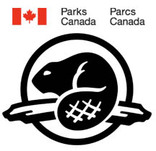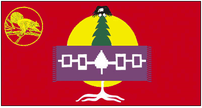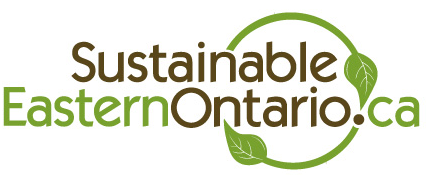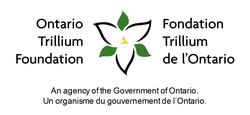Stronger togetherThe Algonquin to Adirondacks region is a truly unique ecosystem, an ancient migrational pathway that stretches across two national boundaries and intersects with First Nations and Indigenous communities. Many impactful groups are engaged in the on-the-ground and everyday work of preserving and conserving that natural landscape to benefit the species that make their home in the A2A. As a collaborative organization, we know that we are stronger when we work together with incredible partners to amplify our voices and deepen our impacts. If you and your group are doing great work in the A2A region, consider joining the A2A Collaborative to access science research, ecological mapping, and outreach materials being produced by the Collaborative, to benefit from shared fundraising efforts, and to collaborate with other organizations in shaping the future direction of the A2A region. Contact us today to learn more or join us directly!
Our Partners
Adirondack Council: The Adirondack Council is a non-profit conservation advocacy and education group that works to protect the ecological integrity and wild character of New York’s great Adirondack Park. The Council recognizes that Adirondack Park must remain ecologically connected to surrounding lands and waters to maintain its integrity and to help other areas regain theirs. The Council recognizes A2A as one of the most important wildlife corridors, or wildways, in the larger Northern Appalachian/Adirondack/Acadian region, as Alice the Moose taught us many years ago. Adirondack Mountain Club: ADK (Adirondack Mountain Club) works to protect New York State wild lands and waters by promoting responsible outdoor recreation and building a statewide constituency of land stewardship advocates. Based out of the Adirondack Park, ADK is a leader in providing outdoor education, promoting responsible recreation, performing trail work, and organizing stewardship experiences. Charleston Lake Association: The Charleston Lake Association (CLA) is dedicated to keeping Charleston Lake Beautiful in every way. Our mission is to preserve and enhance our beautiful lake by focusing on a safe lake for all residents and guests, the highest possible water quality, pristine landscapes, natural vistas, protecting local species, and a sense of community, family roots, and traditions. Ducks Unlimited (Canada): Ducks Unlimited Canada (DUC) connects people to a healthier world through wetland conservation and restoration. Wetlands provide essential habitat for wildlife, including many species at risk. They also provide clean water and reduce the impacts of floods, droughts and climate change. There are currently 6.2 million acres of wetlands and associated natural habitat under DUC's care. Forests Ontario: Forests Ontario is the province’s leading charity dedicated to the creation, preservation and maintenance of forests and grasslands. Our ambitious, large-scale tree planting programs, extensive education resources, and decades of community outreach resulted in millions of trees being planted each year. We are the trusted authority for those seeking to invest in the growth and future of our forests, and the health of our communities. Frontenac Arch Biosphere: The Frontenac Arch Biosphere Network supports education and research, contributes to strengthening sustainable community development by offering a wide range of initiatives such as Nature Programming, The Youth Climate Action Summit, Conservation projects, and Sustainable Tourism programs that celebrate the interconnectedness of nature, livelihood, well-being and culture, for this and future generations. One of 19 biosphere regions in Canada,The Frontenac Arch Biosphere overlaps with the traditional territories of the Anishinaabe (Algonquin) and Haudenosaunee and (Iroquois) and encompasses an area of approximately 2700 sq. km in Eastern Ontario, Canada. Haliburton Highlands Land Trust (HHLT): The Haliburton Highlands Land Trust (HHLT) is an independent, non-government, environmental charity focussed on protecting lands and waters for future generations. A major, ongoing project involves working with partners to protect the Haliburton Highlands Corridor which covers over 100,000 hectares of unceded public and private land, rich with wetlands, forests, wildlife communities, species at risk, and deep carbon deposits. It extends across southern Haliburton and northern Peterborough counties. Indian River Lakes Conservancy: The Indian River Lakes Conservancy (IRLC) was formed in 1998 by a group of volunteers who were gifted a tract of land in Theresa, NY and given the task of preserving and protecting that land forever. Since that first track of land was donated, our organization has grown tremendously, and we now protect over 2,500 acres of land and maintain more than 20 miles of public trails within the Indian River Lakes Watershed. Our watershed starts near Lake Bonaparte and extends northeast all the way to Black Lake. The Indian River Lakes system takes its name from the Indian River, a picturesque mostly slow-moving river that flows through the heart of Northern New York's Frontenac Arch. Land Between: The Land Between is the name of a unique and important region and an award winning charity that works to celebrate and conserve the region. The region spans south-central Ontario and is synonymous with Cottage Country, and is one of 15 Community Nominated Priority Places in Canada harbouring 57 species-at-risk. It is a last wilderness refuge. The charity is unique and a model of cooperation as it embraces the tenets of the original treaties of Canada by walking hand in hand with Indigenous Nations and communities, with a minimum of 50% Indigenous governing board members. Land Conservancy for Kingston, Frontenac, Lennox, and Addington: The Land Conservancy sets aside land for nature in Frontenac and Lennox & Addington counties. We currently have 452 hectares (1117 acres) under protection through ownership and conservation easements. Please follow us on social media and visit our website to find out more about our efforts. Mississippi Madawaska Land Trust (MMLT): Mississippi Madawaska Land Trust (MMLT) is a nonprofit, charitable organization that takes direct action to legally protect and steward ecologically sensitive lands in the general region of Ottawa West to the Madawaska River watershed. MMLT currently has 10 properties (3,200 acres) of land under its care. Visit us at mmlt.ca. Nature Conservancy of Canada: The Nature Conservancy of Canada (NCC) is the country’s unifying force for nature. We seek solutions to the twin crises of rapid biodiversity loss and climate change through large-scale, permanent land conservation. NCC is a registered charity. With nature, we build a thriving world. To learn more, visit natureconservancy.ca. Northeast Wilderness Land Trust:Northeast Wilderness Trust conserves forever-wild landscapes for nature and people. Founded in 2002, the non-profit protects places that benefit wildlife, biodiversity, and climate resilience while celebrating the benefits of wildlands to people. The Wilderness Trust safeguards more than 67,000 wild acres in six states. Learn more at www.newildernesstrust.org. Ontario Ministry of Natural Resources & Forestry: The Ministry of Natural Resources and Forestry provides opportunities for resource development and outdoor recreation for the continuous economic and social benefit of the people of Ontario; and administers, protects, and conserves public lands and waters. The ministry's programs are concerned with the use of natural resources for resource utilization and recreation. Ontario Nature: Ontario Nature protects wild species and wild spaces through conservation, education and public engagement. It is a charitable organization representing more than 30,000 members and supporters, and 155 member groups across Ontario. Since 1931, Ontario Nature has always been there when nature needs it most. Learn more at ontarionature.org. Otty Lake Association: The Otty Lake Association (OLA) is a non-profit volunteer organization representing the residents and cottagers of Otty Lake in Eastern Ontario. The OLA’s focus is on the protection and enhancement of the natural environment of the lake and the surrounding watershed. Plenty Canada: Plenty Canada is a registered non-profit organization that facilitates access to and shares resources with Indigenous peoples and other community groups around the world in support of their environmental protection and sustainable development goals. At Plenty Canada we recognize that people are part of the environment and we sustain healthy lives only when the environment as a whole is healthy. For us the environment and the biodiversity of our environment is a precious treasure we need to protect. Queen’s University Biological Station (QUBS): The Queen’s University Biological Station (QUBS; QUBS.ca) has been at the forefront of university based training and research in ecology, evolution, conservation, and environmental studies for over 7 decades. Its two campuses provide lab space, field & lab equipment, classrooms, library, research collections, with accommodation for 130 and a staffed kitchen. Research at QUBS spans many fields, from satellite-based remote sensing, through studies of impacts of climate change or toxins on the environment, to work on invasive and at risk species. Users come from Queen’s, from many other Canadian universities, NGOs and governmental agencies, and from institutions from the USA, Europe, China, and Latin America. QUBS Elbow Lake Environmental Education Centre in South Frontenac Township provides science outreach and public education, with emphasis on research done at the Station. We provide a unique venue for public outreach and educational programs in biodiversity, conservation, and environmental stewardship. Rewilding Institute: The Rewilding Institute (rewilding.org) promotes strategies to protect and restore wilderness and wildlife -- including top carnivores like Puma and Wolf -- throughout North America and beyond. We focus especially on regional and continental wildways, broad wildlife corridors, including the Atlantic/Appalachian/Adirondack/Acadian Wildway. We see A2A as being one of the most critical habitat connections in eastern North America, and part of this larger Atlantic/Appalachian Wildway. Rideau Waterway Land Trust: Rideau Waterway Land Trust is a non-profit charitable organization that supports the conservation of natural lands along the Rideau Corridor, fostering a healthy future for its communities. RWLT currently holds 21 nature reserves including community use properties, Rock Dunder and J.H. Fullard. Rideau Valley Conservation Authority: RVCA is responsible for furthering the "conservation, restoration, development and management of natural resources in the watershed." We are responsible for protecting people and property from natural hazards like flooding and erosion. Save the River: Save The River is a nonprofit environmental organization whose mission is to restore, preserve and protect the ecological integrity of the Upper St. Lawrence River through advocacy, education, research, and stewardship. SLELO PRISM: The St. Lawrence – Eastern Lake Ontario Partnership For Regional Invasive Species Management (SLELO PRISM) was formed in 2011 to combat the spread of invasive species and mitigate associated threats. Our mission is to protect native habitats, biodiversity, natural areas, and freshwater resources by using a collaborative and integrated approach to invasive species management with an emphasis on prevention, early detection, rapid response, education and outreach. Our work is focused across five counties; Jefferson, Lewis, Oneida, Oswego, and St. Lawrence. SLELO PRISM has made tremendous progress towards the prevention of new species and the management of existing species within the region. South Nation Conservation Authority: South Nation Conservation (SNC) is a watershed management agency and a leader in applying sustainable practices. Established under the Conservation Authorities Act of Ontario in 1947, SNC has decades of practical experience in protecting our environment and engaging communities. Today, it manages 4,441 km2 of land in Eastern Ontario on behalf of 16 member municipalities, including the City of Ottawa and municipalities within the United Counties of Prescott-Russell, Stormont, Dundas, and Glengarry, and Leeds-Grenville. Staying Connected Initiative: The Staying Connected Initiative (SCI) seeks to conserve, restore, and enhance landscape connectivity across the Northern Appalachian/Acadian region of the U.S. and Canada. Landscape connectivity safeguards wildlife and communities from the impacts of habitat fragmentation and climate change. We unite public and private partners and apply the tools of conservation science, land protection, community outreach, land use planning, transportation mitigation, and policy to achieve our mission. St. Lawrence Land Trust:The Mission of the St. Lawrence Land Trust is to protect privately-owned open space through voluntary means like easements or donations within the watersheds of the rivers that flow north out of the Adirondack Mountains to the St. Lawrence River. Our focus is the rivers crossing St. Lawrence County, New York, outside of the Adirondack Park. Sustainable Eastern Ontario: Sustainable Eastern Ontario is a network organization that fosters partnerships and collaborations on sustainability activities throughout Eastern Ontario. We connect sustainability groups together, develop strategic collaborations across the sector, build capacity of administration and operations, and celebrate successes across the region. We are raising the profile and capability of sustainability initiatives and telling the story of transition and resilience in our community. Wildlands Network: Since 1991, Wildlands Network has been committed to reconnecting, restoring and rewilding North America for the benefit of all species. Our work is founded in science, driven by fieldwork and furthered through strategic policy and partnerships. We envision a future where nature is undivided, and where people coexist in harmony with our native plants and animals. Indigenous Partnerships
The Algonquin to Adirondacks Collaborative (A2A) acknowledges that the A2A region includes Anishnaabe land and Haudenosaunee land, and recognizes that the Haudenosaunee and Anishnaabe peoples still have responsibility to this land. As it works toward its mission, A2A will strive to amplify Indigenous voices and voices of those of seeking justice. We commit to working in solidarity with the Indigenous peoples of Turtle Island/North America. Indigenous communities are not stakeholders in the A2A region, but instead nations with responsibilities to the land since time immemorial. These cross-cultural relationships between Indigenous and non-Indigenous people in this region are not new. The Two Row Wampum belt of 1613 is the symbolic record of the first agreement between Europeans and Indigenous peoples on Turtle Island/North America, which includes the A2A region. The A2A Collaborative has had a relationship with Algonquins and Mohawks since being established in 2000, however, these partnerships need to be cultivated anew and nurtured. A2A strives to embody equity, empowerment, and respect in our engagement and collaboration with First Nations (Canadian term) or Native Americans (American term). The Anishnaabe created the Friendship and Welcoming Wampum in the early 1700s to reflect the relationship between the French, the English, and in the centre, Indigenous peoples to share the land within the limits of natural law and to respect the right of future generations. Section 35 of the Canadian Constitution is living proof of Indigenous Nations as the first pillar of what is now Canada. The A2A Collaborative has had a relationship with Algonquin people (Omàmiwinini, who are Anishnaabe) and Mohawk people (Kanien'kehá:ka, who are Haudenosaunee) since being established in 2000, however, these partnerships are being cultivated anew. A2A strives to embody equity, empowerment, and respect in our engagement and collaboration with First Nations (Canadian term) or Native Americans (American term). Past Collaborators
Since our formation, we've partnered with many other organizations and agencies that share our goals of connectivity and ecological restoration in the A2A region. Here are some of other groups we've worked with on projects: Bon Echo Provincial Park
Charleston Lake Association Charleston Lake Provincial Park Eastern Ontario Model Forest Elizabethtown-Kitley Township Frontenac Provincial Park Kingston Field Naturalists Kawartha Highlands Provincial Park Leeds and the Thousand Islands Township Lower Beverley Lake Association Murphy's Point Provincial Park Silent Lake Provincial Park Thousand Islands Community Development Corporation United Counties of Leeds and Grenville Residents of Upper Beverley Lake Learn more about our vision and goals, and get in touch if your organization or agency would like to partner with us.
|
Foundational Partners
|
© 2024 Algonquin to Adirondacks Collaborative
A2A is a 149(1)(f) registered Canadian charity | BN: 86307 1668 RR0001 | and a 501(c)(3) tax-exempt organization in the U.S. | IRS #86-1358996 |
Become a Member | Maps & Region | FAQs | Donate Online | Contact Us
A2A is a 149(1)(f) registered Canadian charity | BN: 86307 1668 RR0001 | and a 501(c)(3) tax-exempt organization in the U.S. | IRS #86-1358996 |
Become a Member | Maps & Region | FAQs | Donate Online | Contact Us








